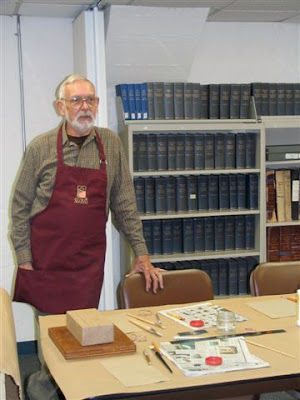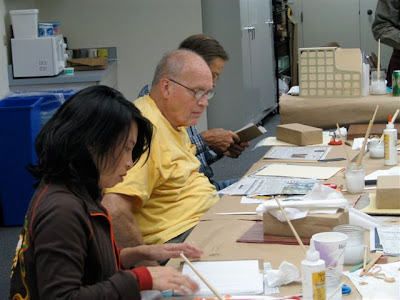The California Genealogical Society and Library is celebrating our first holiday season at our new address in the Breuner Building at 2201 Broadway in Oakland. It was gratifying to receive this from the Breuner Building Operations Manager, Carly Perez-Banuet:
This holiday season we have two great ways to give back! The first is One Warm Coat. Please bring in any coat you no longer need and One Warm Coat will help distribute back into our surrounding area. You can drop off to security or the management office on the mezzanine level. My goal is to have the final coat pick-up on 12/21/07.
The second is our annual food drive with the Alameda County Food Bank. The food collection bin is set up in the lobby and ideally we will have multiple pick-ups. We will have them pick up once the week of the 17th and one the first week of January. I have attached a wish list of needed foods. You may have also noticed their billboards up in the area…our donations going right back into the community!
* The following is a list of the most needed food items:
- Canned Fruit and Vegetables
- Canned Meats and Fish
- Peanut Butter
- Pasta
- Beans
- Rice
- Canned Soup
- Dry Cereal and Oatmeal
- Tomato Sauce
- Powdered Milk
 From the One Warm Coat Web site:
From the One Warm Coat Web site:
Lois Pavlow created One Warm Coat because she wanted a coat to be given to someone in need. Lois organized the first One Warm Coat drive on Thanksgiving Weekend in 1992 at Union Square in San Francisco, California.
In 2002, Sherri Lewis Wood starting expanding One Warm Coat’s efforts beyond San Francisco so that all who had an interest in donating a coat or hosting a coat drive could easily do so. The impact of these simple and meaningful coat drives makes a difference in the lives of many. Today One Warm Coat drives are held in 49 states across the country from September through March, and include international locations.
From Alameda Counyty Food Bank Web site:
The Alameda County Community Food Bank is a 501(c)(3) nonprofit organization that has been serving the community since 1985. As the county’s clearinghouse for donated food, the Food Bank provides food assistance for 40,000 low-income Alameda County residents each week, which includes 14,000 children and 7,000 seniors. Most adults served are among the working poor.
- Provide food to 300 community agencies that serve on-site meals and/or food bags for their clients
- Distribute bags of food to school children in need
- Distribute fresh fruits and vegetables several times a week to member agencies
- Operate a toll-free hunger helpline that makes over 1,000 referrals each month
- Conduct food stamp outreach clinics
- Educate the community and public officials about the causes of hunger and poverty





